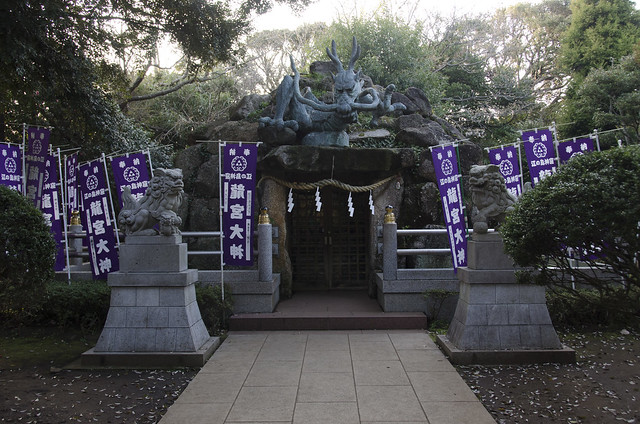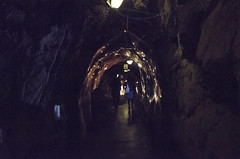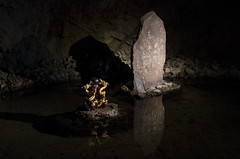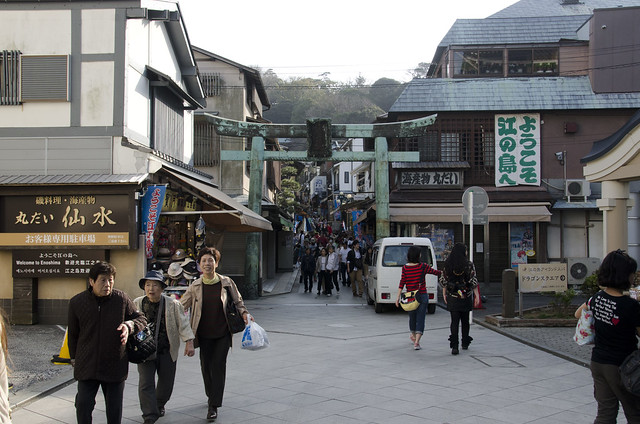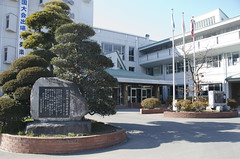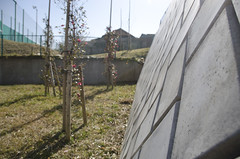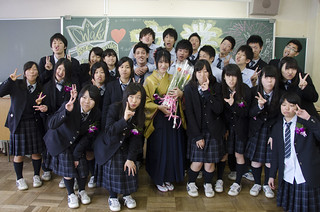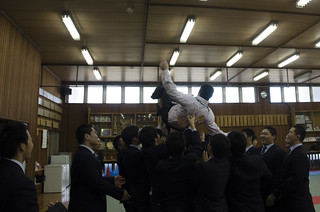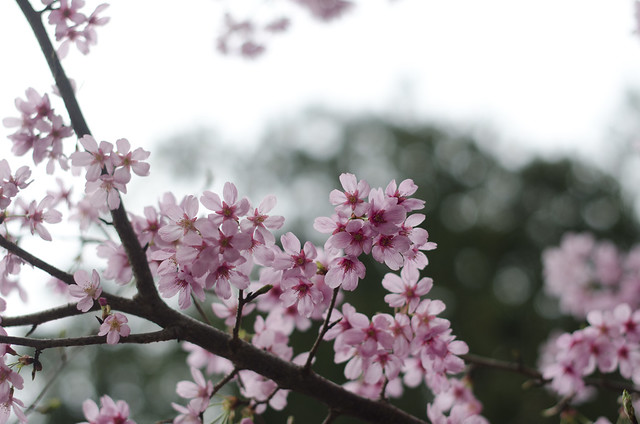
I know I've mentioned professional development in passing before, Nick, but it really is one the major platforms of my tenure here in the Teaching Exchange Program.
It has been a key issue ever since I first interviewed for the position, where I received a slightly less-than-inspiring response to the question of employee-support after the termination of the three-year contract. Now I understand this is of no fault of the committee: as a de facto hiring firm, their job is to recommend the best candidate to the hiring agency, not dictate the terms of the position. And as a volunteer organization, they can offer the support and interest of the community, but make no promises or guarantees of post-employment placement. However, as someone who had to leave a very stable position with plenty of upward-mobility potential, moving even laterally to a place whose only guarantee was negative-mobility was daunting.
In talking about this issue with other foreign workers in various education positions throughout Kashiwa, it has become more and more clear that I need to continue to work to ensure that when I leave Ichikashi I take with me much more than just fond memories.
And while the onus to pursue professional development always falls on the employee, because of the very finite nature of this position, an emphasis of this program should be on fostering an atmosphere that illuminates the value of and encourages participation in continuing education, both in terms of practical skills via on-the-job training as well as academic theory and practice.
This would seem attractive in two ways:
First, in supporting ongoing professional development for even its temporary employees, Ichikashi would be better served by instructors who are trained in the newest techniques, guaranteeing that the foreign language teaching at Ichikashi would remain current and progressive. Ichikashi would then be at the forefront of Language Education, attracting high-quality candidate-students interested in receiving the most up-to-date and effective foreign language instruction and training.
The second is that in pursuing professional development, the workers themselves are better prepared and much more competitive when they re-enter the candidate pool with not only years of practical, in-class experience, but also technical training and certification which also acts as proof of an interest in ongoing training. This, in and of itself, is an asset for any employer looking for proactive, conscientious workers.
Such a change, in addition to fighting for the distinction of 外国語講師 (Foreign Language Instructor) over the oft-pejorative "ALT" title, should elevate the desirability of the position. Not only is the institution, then, seen as actively interested in the well-being and development of its employees--which makes the institution a desirable place to work for--but the Foreign Language Instructor position at Ichikashi avoids the stigma of being a "dead-end job" for people who lack ambition or a "sabbatical-position"--the kind of job one has to take a "break" from a "real career" to pursue.
Earlier I was talking to a colleague who works at the Board of Education as the Foreign Language Education Coordinator about the plethora of options available to any teacher living in Japan, and yet how hard it often seems to get people at any level of administration interested in investing
1Even just "time."
1 in the professional development of their small army of "temporary workers." It is not surprising as they are just temporary; after three years they practically disappear.And partly it is that sort of casual dismissive thinking that hurts language teachers in Japan as it theoretically limits their value after matriculating through such programs. If these employees are not worth any professional investment from their current employer, they are hardly worth more potential investment by future employers. And, realistically, the observability of this end-result affects the kinds of applicants that would find such teaching opportunities interesting but who would also be deterred by such a potential "gap" in their resume.
I am not proposing that Ichikashi mandate professional development courses into their Exchange Teaching Program, but make accommodations for those teachers interested in professional development to make it a reasonable career path to pursue.
As the list of resources (CELTA, CertTESOL, DipTESOL, &tc.2
2Or how about even a JLPT?
) on the above-mentioned kALTitude website notes, a number of 3-month distance learning certification programs are available to educators, as well as one-month long intensives specifically targeted at teachers in Japan by being scheduled in August, the one month in the calendar year that Japanese teachers don't have any scheduled classes.My proposition is this: at Ichikashi, as a full-time member of the faculty, we are expected to be on campus even during non-academic days, available to do work as needed, such as lesson preparation. However, teachers are allowed to take non-academic days off by using vacation days. As it stands, if I want to take part in the one-month CELTA certification program, I would have to use more than 18 of my vacation days. Yet if we consider the professional development of the Foreign Language Instructor as a functional part of "lesson preparation," a special dispensation could be made to allow for off-campus non-instructional work hours, akin to "chaperoning" or "off-site business meetings."
Once such an allowance is made then funding options could be considered. Though that may be one bridge too far.
Anyway, I incessantly remind Kashew that we need to constantly be looking forward to the day that we are no longer employed at Ichikashi. Unlike so many other jobs, we have the advantage of knowing well and good that our contracts are finitely
3*infinitely?
3 terminal. That means that at the end of our three years here, if we are mindful of our position, we can maneuver ourselves to be better situated, more experienced, and therefore much more desirable as hirable commodities when we leave.While Ichikashi provides us with excellent opportunities for personal growth, we also need to continually be aware that personal growth does not easily show through on a paper resume. Rather, with our time at Ichikashi we can both grow personally and professionally and really create resumes of distinction. And if Ichikashi will allow itself to be a conduit through which professional development is not just offered but encouraged and fostered, it may be impossible to imagine how much more educationally effective and professionally desirable the Teaching Exchange Program can become.
